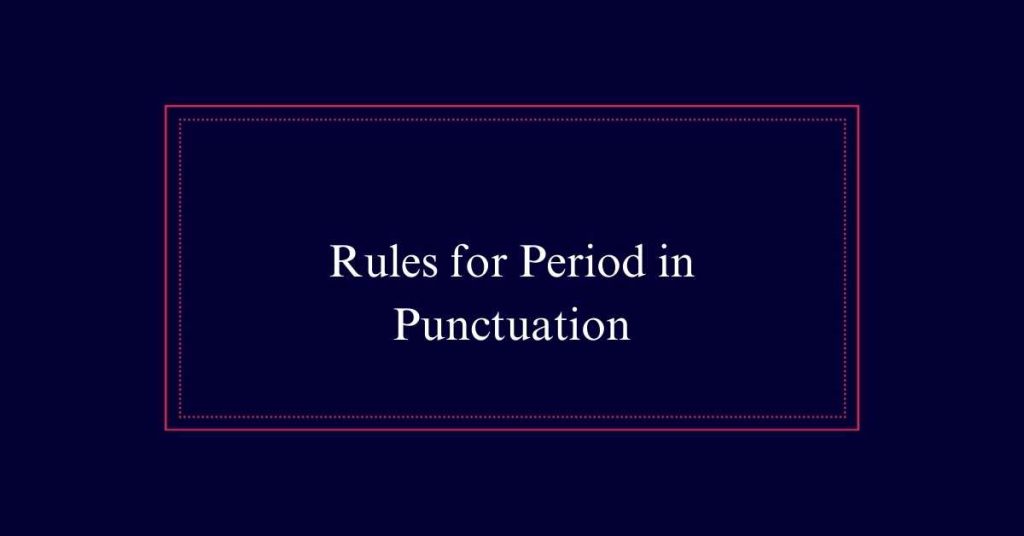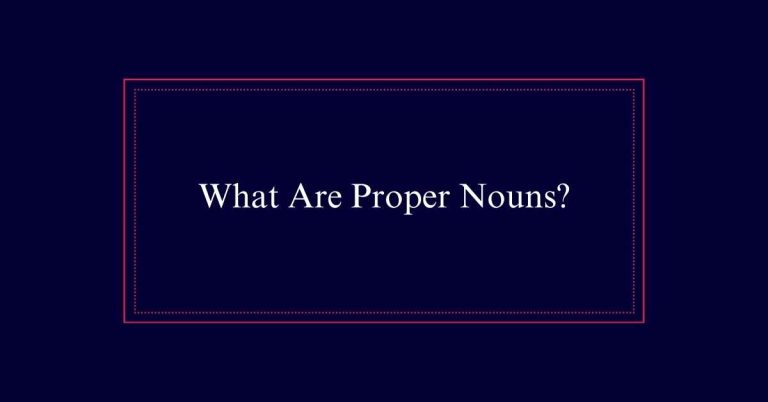Rules for Period in Punctuation
A period is a punctuation mark that indicates the end of a declarative or imperative sentence. It appears as a small dot at the baseline of the text. Periods also punctuate abbreviations, like ‘Mr.’ or ‘Dr.,’ and are used in numerical expressions, such as decimals. They guarantee clarity and completeness in writing. Additionally, three periods together form an ellipsis, signaling omitted content. In computing, periods separate elements in URLs and filenames.
Definition of a Period
A period, also known as a full stop in British English, is a punctuation mark that appears as a small dot at the end of a sentence. It signifies the completion of a thought or statement, providing a clear boundary between sentences.
Unlike commas or semicolons, which indicate pauses or connections within a sentence, a period provides a definitive end. In spoken English, it corresponds to a pause, indicating a break before a new sentence begins.
Periods also serve various roles in other contexts, such as mathematics, where they denote decimals, and computing, where they separate elements in URLs and file names. Their primary function remains to mark the conclusion of a sentence.
Period Appearance
In addition to its primary function of ending sentences, the period appears as a small, round dot positioned at the baseline of written text. This seemingly essential mark plays a vital role in written communication. Its placement can vary slightly depending on the context and typographical conventions. Below is a table highlighting the appearance of the period in different contexts:
| Context | Appearance Description |
|---|---|
| End of Sentence | Positioned directly after the last character |
| Abbreviations | Follows the abbreviated word |
| Decimal Point | Separates the whole number from the fraction |
| URLs | Separates domain levels |
Period Uses
Periods serve multiple essential functions in written language across various contexts. They are vital for ending declarative and imperative sentences, providing a clear pause for the reader.
Periods also play a significant role in abbreviations, such as ‘Mr.’ or ‘Dr.,’ and initials like ‘J.K. Rowling.’ In academic writing, three periods form an ellipsis, indicating omitted content within a quotation.

Beyond grammar, periods are used in numerical contexts to denote decimals, such as ‘3.14,’ and in computing to separate elements in URLs and filenames, like ‘www.example.com.’ Additionally, periods are used in acronyms, though this practice is becoming less common.
Ending Sentences
Ending a sentence with a period provides a clear signal that a thought or statement is complete. This punctuation mark is fundamental in English grammar, ensuring clarity and coherence in written communication.
Periods end declarative sentences, which make statements or express facts, as well as imperative sentences, which issue commands or requests. For instance, ‘The meeting starts at 9 AM.’ and ‘Please close the door.’ both appropriately conclude with periods.
Additionally, indirect questions also end with periods, such as in ‘She asked if the report was ready.’
Abbreviations and Initials
Abbreviations and initials often incorporate periods to indicate omitted letters and to maintain clarity in written communication. For example, ‘Dr.’ for Doctor and ‘U.S.A.’ for United States of America. The use of periods in these contexts helps readers quickly understand the abbreviation and guarantees that the text remains clear and professional. Common practice varies; some styles omit periods, especially in acronyms. Below is a table illustrating the use of periods in abbreviations and initials:
| Type | Example 1 | Example 2 |
|---|---|---|
| Abbreviations | Dr. (Doctor) | Prof. (Professor) |
| Initials | J.K. (J.K. Rowling) | R.B. (Ruth Bader) |
| Acronyms | U.S.A. | U.N. |
Ellipses With Periods
An ellipsis, formed by three consecutive periods, is used to indicate omitted content within a text. This punctuation mark suggests that part of the original material has been left out, often for brevity or to avoid redundancy.
In formal writing, ellipses can also imply a pause or unfinished thought. When an ellipsis appears at the end of a sentence, it is followed by a period, making it four dots in total.
Proper usage of ellipses maintains clarity and respects the reader’s comprehension. Remarkably, ellipses should be used sparingly to avoid confusion and maintain the integrity of the text.
Periods in Mathematics
In mathematics, periods are essential for denoting decimal points, which separate the whole number part from the fractional part of a number. This use of the period is important for precision in numerical representation.
For example, in the number 3.14, the period distinguishes the integer 3 from the fractional 0.14, which represents 14 hundredths. Periods are also used in repeating decimals, such as 0.333…, where the period indicates the beginning of the repeating sequence.
Additionally, periods play a significant role in mathematical notation for functions, coordinates, and statistical data.
Periods in Computing
Periods play an essential role in computing, particularly in URLs and file names where they act as separators to delineate different elements.
In URLs, periods separate domain names from top-level domains, such as in ‘www.example.com.’ They also help distinguish different parts of a file name, separating the file name from its extension, like in ‘document.txt’ or ‘image.jpeg.’ This use of periods guarantees that systems can accurately identify and process files and web addresses.
Additionally, periods are often employed in programming languages to access properties or methods of objects, as in ‘object.property’ or ‘object.method().
Periods in Acronyms
Acronyms traditionally include periods to separate their constituent letters, enhancing readability and clarity. This convention helps distinguish each letter as part of an abbreviated form, such as ‘U.S.A.’ for the United States of America.
However, modern usage trends toward omitting periods in many acronyms, especially in informal contexts and digital communication. For example, ‘NASA’ and ‘FBI’ are widely accepted without periods. The choice to use or omit periods often depends on the style guide being followed.
Formal writing and specific institutional guidelines may still prefer the use of periods to guarantee precision and formality.
Special Cases
While the use of periods in acronyms has evolved, there are special cases in punctuation where their application follows distinct conventions.
For instance, periods are omitted in metric units (e.g., cm, kg) but included in U.S. customary units (e.g., in., ft.). In legal documents, the period is sometimes omitted after abbreviations to prevent ambiguity.
Additionally, periods are used differently in various citation styles; for example, APA style prescribes periods after authors’ initials, while some scientific journals do not.
Furthermore, in digital communication, periods often separate components of file names and URLs.







